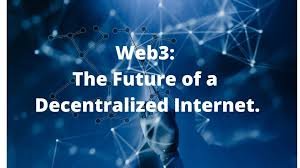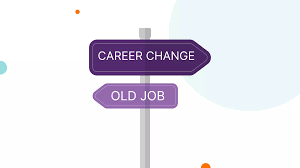
Web3 and the Future of Decentralized Internet: Empowering Users in a Trustless World
Web3 and the Future of Decentralized Internet
The internet as we know it today has transformed almost every aspect of human life—from communication to commerce, education, entertainment, and beyond. Yet, the current web, often referred to as Web2, is centralized. The data and content we create are controlled by a handful of tech giants like Google, Facebook, Amazon, and Twitter. While this has facilitated innovation and convenience, it has also raised serious concerns about privacy, security, data ownership, and censorship. Enter Web3, the next evolution of the internet that promises a decentralized, user-driven, and more equitable digital world.
What is Web3?
Web3, or Web 3.0, represents the third generation of the internet. Unlike Web2, where centralized platforms dominate and collect user data, Web3 leverages blockchain technology, decentralized networks, and cryptography to enable peer-to-peer interactions. It empowers users to own their data, control digital identities, and participate directly in the creation, governance, and monetization of content and services.
In simple terms, Web3 aims to create an internet where users, not corporations, have control. It integrates decentralized finance (DeFi), non-fungible tokens (NFTs), decentralized autonomous organizations (DAOs), and cryptocurrencies into everyday digital interactions. This shift could redefine the way we work, socialize, invest, and govern online communities.
Core Principles of Web3
-
Decentralization: At the heart of Web3 is decentralization. Data is stored across multiple nodes rather than a single server, making it less vulnerable to hacks, censorship, or control by a few entities.
-
User Ownership: Users have true ownership of their digital assets, including data, identity, and content. Blockchain records transactions and ownership, eliminating intermediaries.
-
Trustless Interaction: Web3 enables trustless transactions, meaning users can interact without relying on a central authority. Smart contracts automatically enforce rules, reducing the risk of fraud or manipulation.
-
Token-Based Economics: Cryptocurrencies and tokens incentivize participation, content creation, and governance. Users can earn tokens for contributing to a network, promoting engagement, and supporting decentralized communities.
-
Interoperability: Web3 promotes compatibility between different platforms, allowing seamless movement of assets, identities, and applications across decentralized networks.
Why Web3 Matters
The transition to Web3 is more than just a technological upgrade—it is a paradigm shift in how the internet operates:
-
Privacy and Security: With Web3, users control their data, reducing risks of mass surveillance or data breaches.
-
Freedom from Censorship: Decentralized networks prevent single entities from arbitrarily restricting content, fostering freedom of speech.
-
Economic Opportunities: Web3 introduces new ways for creators, developers, and users to monetize their contributions through NFTs, tokens, and decentralized marketplaces.
-
Enhanced Collaboration: DAOs enable collective decision-making, allowing communities to govern digital ecosystems without relying on centralized authorities.
-
Innovation Acceleration: Open-source protocols encourage developers to build and integrate new tools, apps, and services without permission from centralized corporations.
Web3 Technologies Transforming the Internet
Several technologies are foundational to the Web3 ecosystem:
-
Blockchain: The backbone of Web3, blockchain is a decentralized ledger that securely records transactions and digital ownership.
-
Smart Contracts: Self-executing contracts on the blockchain that automate transactions, reduce intermediaries, and ensure transparency.
-
Decentralized Applications (dApps): Applications that run on decentralized networks rather than centralized servers, providing greater user control and transparency.
-
Cryptocurrencies and Tokens: Digital currencies like Bitcoin, Ethereum, and utility or governance tokens incentivize participation and reward contributions.
-
Non-Fungible Tokens (NFTs): Unique digital assets representing ownership of art, music, videos, virtual land, or collectibles.
-
Decentralized Autonomous Organizations (DAOs): Organizations governed by rules encoded as smart contracts, enabling collective decision-making by members.
Potential Challenges for Web3
Despite its promise, Web3 faces several challenges:
-
Scalability: Decentralized networks can be slower and less efficient compared to centralized systems. Layer-2 solutions and new consensus algorithms aim to address this.
-
User Experience: Web3 interfaces are often complex, making mainstream adoption a challenge. Simplified wallets and onboarding processes are essential.
-
Regulation and Legal Frameworks: Governments are still figuring out how to regulate cryptocurrencies, tokens, and decentralized finance. Clear regulations will determine the future adoption of Web3.
-
Security Risks: While decentralized systems reduce certain risks, vulnerabilities in smart contracts or blockchain networks can lead to hacks or losses.
-
Environmental Concerns: Proof-of-work blockchains consume significant energy. Transitioning to energy-efficient consensus mechanisms like proof-of-stake is vital.
The Future of Decentralized Internet
Web3 has the potential to redefine the digital economy and society at large. As adoption grows, we could witness:
-
Decentralized Social Media: Platforms where users own their content, monetize their participation, and control algorithms.
-
Metaverse Integration: Virtual worlds where digital ownership, social interactions, and economies are powered by Web3 technologies.
-
New Governance Models: DAOs enabling community-driven decision-making for everything from online communities to real-world projects.
-
Empowered Creators: Artists, writers, and developers can directly monetize their work without intermediaries, thanks to NFTs and tokenized rewards.
-
Financial Inclusion: Decentralized finance platforms could provide banking services to millions without access to traditional financial systems.
Conclusion
Web3 represents a transformative leap toward a more equitable, secure, and user-centric internet. While challenges remain, the promise of decentralization, data ownership, and trustless interactions offers a compelling vision for the future. From redefining online communities to creating new economic models and empowering creators, Web3 has the potential to reshape the internet as we know it. Embracing this decentralized future could lead to a more transparent, participatory, and inclusive digital world for everyone.
FAQs about Web3
1. What is the main difference between Web2 and Web3?
Web2 is centralized, with user data controlled by large corporations, whereas Web3 is decentralized, giving users ownership, control, and direct participation in digital networks.
2. How does Web3 protect user privacy?
Web3 stores data on decentralized networks rather than centralized servers, enabling users to control who accesses their information. Cryptographic techniques ensure security and anonymity.
3. Can I make money with Web3?
Yes, through cryptocurrencies, tokens, NFTs, and participation in decentralized finance (DeFi) platforms. Creators can monetize content without intermediaries.
4. What are DAOs, and why are they important?
DAOs (Decentralized Autonomous Organizations) are digital organizations governed by smart contracts and community voting. They enable decentralized decision-making and collective ownership.
5. What challenges does Web3 face today?
Challenges include scalability, complex user interfaces, regulatory uncertainty, security risks, and environmental concerns with certain blockchain networks.



